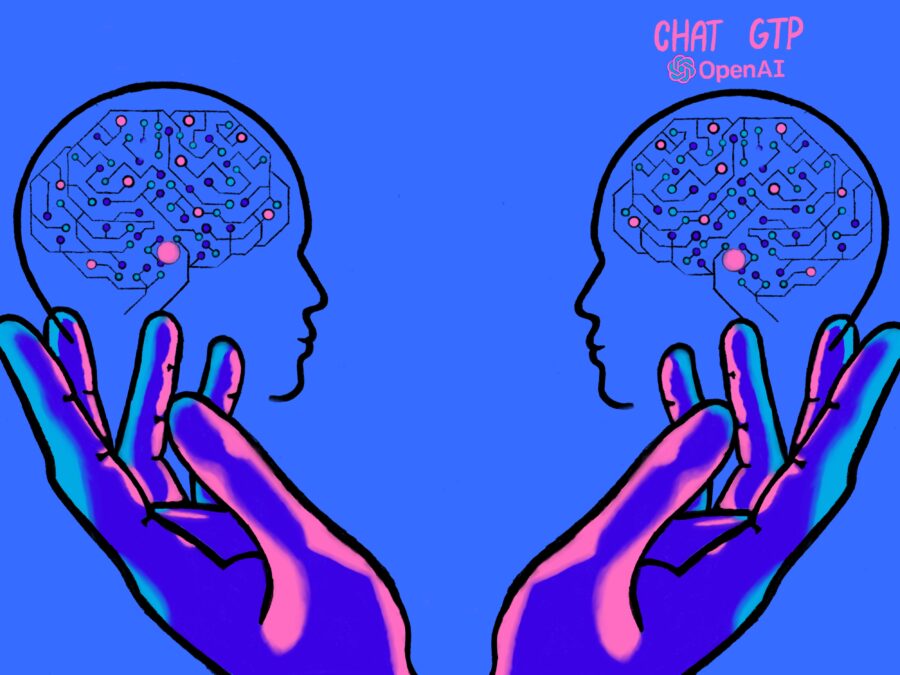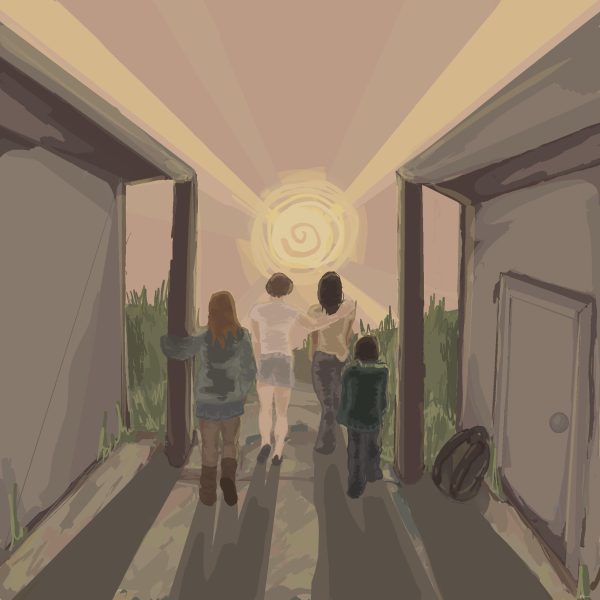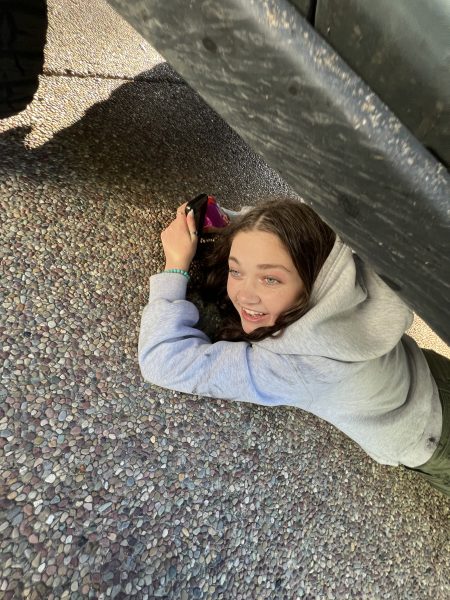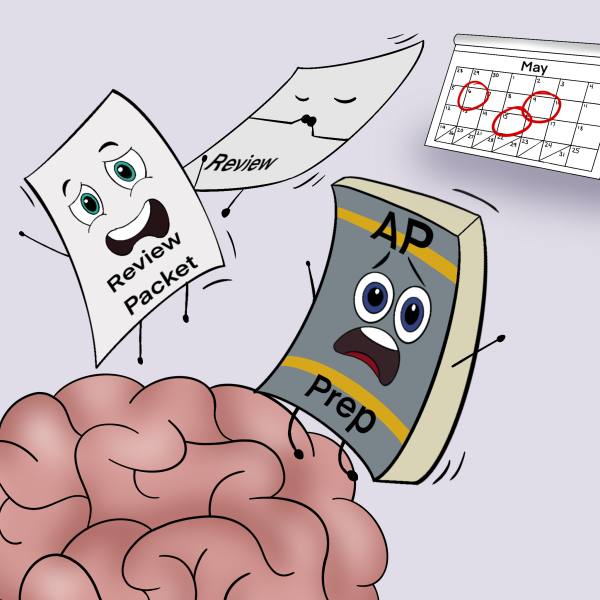Student and Faculty Perspectives: Chat GPT
Teachers and students contemplate the usage of Chat GPT in schools.
ChatGPT is a recently developed artificial intelligence program that simulates human writing, developed by OpenAI. Students using it can input a variety of prompts, such as “600-word essay on love in Romeo and Juliet,” and ChatGPT will scan the internet for websites that relate to the prompt to create an answer. For students, it has become a way to easily finish writing assignments. However, not many have considered its effect on teachers and professors.
First of all, counter-measures to artificial intelligence (AI) usage aren’t always the most reliable. Teachers use websites that scan for ChatGPT in essays. However, Professor Johannes van Gorp from Santa Rosa Junior College stated that “If you’re scanning for AI, the best [these websites] can do is give you a probability, and so you can’t even be sure that the answer that was flagged was actually AI generated.”
The websites give probabilities in percentages. Even in essays that are flagged as 80-90% likely to be made by ChatGPT, there is still that 10-20% chance that the essay was made by a student. Those small percentages are something students are able to grasp at in the event they do get caught, because it’s only a probability, and there’s no concrete way to “prove” that an essay was made by AI.
Despite these probabilities, teachers are still mostly able to tell when an essay was AI generated. This is due to the fact that, as Jake Donohoe argues, “the great flaw in ChatGPT is that it doesn’t sound like you guys. It has a ridiculous over-the-top SAT vocabulary, and it doesn’t write the way we teach you to write…it’s pretty easy to see.” Significant differences in the structure and vocabulary of two different essays made by the same student is a large indicator that that student has been using ChatGPT.
Second, teachers are having to revise their curriculums in order to lessen the chances that a student would be able to use ChatGPT on assignments. For example, Donohoe has gotten rid of online quizzes as a whole, instead opting to have students hand write their essays. It is very tempting to cheat with ChatGPT when using a computer for essay tests, so putting students in a technology-free environment where they won’t feel inclined to cheat has become a critical point for adjustment.
Additionally, teachers are opting to give prompts and books that give students a different perspective and are unique. Offering material one wouldn’t normally expect to find in an English class lessens the chance that a student would find any online works to cheat off of. This pushes a student to think critically and try to give a perceptive analysis rather than cheat. “If everybody’s asking kids to write an essay on The Great Gatsby, it’s easy to find one online, but if I’ve asked you to look at it in a different way, [ChatGPT is ] less likely to be able to help,” said Donohoe.
Cheating prevention has allowed teachers to revise what they are teaching and offer students new prompts and insight. This can be considered a good thing as it allows teachers to align their curriculum with more current issues, but teachers who are less innovative at combating cheating by offering different insights or teaching techniques may struggle with cheating in the near future as students are becoming more aware of ChatGPT’s abilities.
Although high school teachers have found ways around their student’s cheating habits, cheating via the internet becomes more prevalent and increasingly less manageable in online college courses, which are becoming progressively more popular.
To combat this, Van Gorp has taken many precautions: “The [education] institutions themselves are still very much behind the curve when it comes to [identifying] academic dishonesty,” he claimed. School boards have yet to find ways to counter the use of ChatGPT in classrooms. Therefore, Van Gorp has taken it upon himself to write a policy statement in his syllabus for his classes regarding academic dishonesty, especially concerning ChatGPT. This is to ensure a student doesn’t try to claim they weren’t aware usage of ChatGPT wasn’t allowed for assignments.
Van Gorp has also verbally informed his students that the usage of ChatGPT and other AI is prohibited, and that he scans for ChatGPT usage in his assignments. Additionally, Van Gorp discloses that “each assignment has a statement saying you cannot use ChatGPT for answers.” With all these warnings in place, one would think students would get the message and not use ChatGPT on their assignments. Still, according to Van Gorp, “a lot of students still do.”
“The first time I caught it was on my final exams. There were six students who used it,” said Van Gorp. Out of those six students, three of them failed the class. Their failure was mainly because they had already scored bad on previous assignments. “The students that are using those programs right now are also the least likely to have done the reading” he claims. When he asked to have meetings with those students, they refused to meet. Two of the students who were caught dropped the class right away.
Despite all of ChatGPT’s hindrances to education, there are some ways teachers can utilize it to their advantage. Many curious teachers have been exploring the chatbot, trying to discover its capabilities. One example of this would be finding how well it answers questions that teachers would normally ask students, giving it different questions until it reaches what would classify as an A or B+ response.
Another way teachers could use ChatGPT is to “ask it to come up with an essay and then critique it,” said Intro to Psych teacher Ryan Boyd. If given as an assignment, this could help students practice their revision skills, allowing for better peer reviewing and critiquing of their own essays. Boyd also said that he “found it was really good at creating discussion prompts for different topics.” Teachers have found ways that ChatGPT can help them teach, utilizing it in the exact opposite way students do.
However, not all students use ChatGPT for deceitful purposes. Sophomore Matthew Sugiyama has identified the ways ChatGPT has helped him with his essays: “it’s [good] for developing ideas in order to make an argument with other resources.” Instead of having it write his essay for him, he uses it as inspiration and a way to kickstart his research.
There is no doubt that AI chatbots pose a threat to student’s learning. As Sugiyama expressed, “ChatGPT can be used to…cut edges, which in the real world, you can’t do.” However, there are certainly ways both teachers and students can work around ChatGPT usage in classrooms, and even find ways to use it to aid learning. ChatGPT can be both harmful and beneficial to learning, it just depends on how you use it.
Your donation will support the student journalists of Campolindo High School's The Claw. Your contribution will allow us to produce more issues and cover our annual website hosting costs.

(she/her)
Junior Sarah Moses looks for opportunities to expand her creative writing knowledge. With fiction being her favorite genre, Moses is someone...







